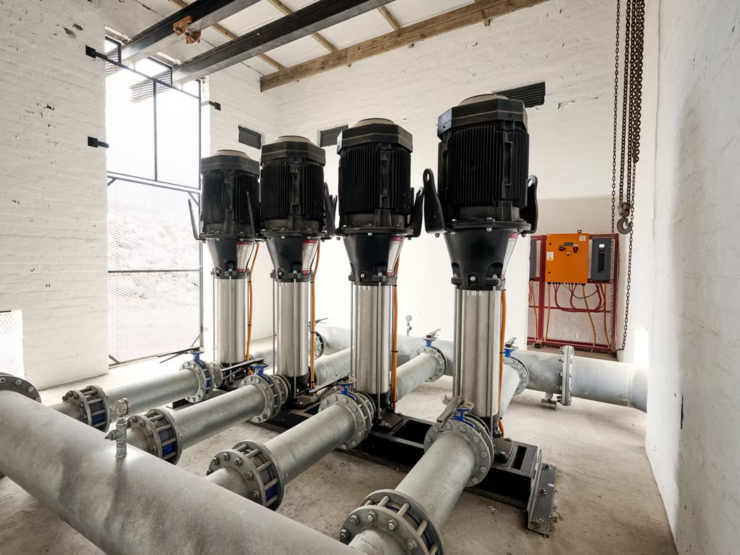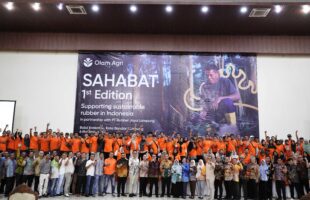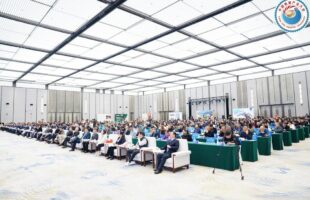
Words By: Rick Holland, Regional Managing Director APAC – Water Utility & Executive Director Grundfos Australia
Our food system is on life support. To feed a population projected to balloon to 9.1 billion by 2050, a 70 percent increase in food production is necessary. Unfortunately, climate change is threatening to push yields down by three to seven percent with every degree of warming. Increasing food production also creates a vicious cycle – the food production system already accounts for over a quarter of global greenhouse gas emissions.
Adding another layer of difficulty is the fact that we are now using more water than ever, with 70 percent going to agriculture even as arable land shrinks. These conflicting challenges underscore the urgent need for a systemic transformation of agriculture towards a more sustainable future.
The sustainable potential of traditional agriculture
In response to the heightened challenges facing agriculture today, efforts to explore and promote sustainable practices have been widespread, spanning both public and private sectors.
Sustainable agriculture essentially hinges on two key aspects: optimising water, energy, and nutrient resources to improve efficiency and productivity, as well as mitigating agriculture’s environmental footprint, such as reducing reliance on fossil fuels and implementing effective management and reuse of agricultural wastewater.
For example, regenerative agriculture focused on soil conservation is gaining traction. Concurrently, there is increasing usage of renewable energy sources, with advancements in Internet of Things technology enabling precise application of biological and chemical inputs.
Solar’s role beyond photosynthesis
Alongside these new initiatives, solar energy is offering innovative solutions for sustainable agriculture. Studies show that solar panels can improve water conditions in water-scarce regions, with a US study observing an increase in water efficiency of more than 300% in areas surrounding solar panels due to their shading effect.
Solar energy serves as a clean alternative to fossil fuels, addressing power supply shortages in some regions and carbon emissions on farms. A solar-powered irrigation system in an olive farm in South Africa is a prime example.
The Mont Rouge Olive Estate possesses a patchwork of 120,000 olive trees covering 200 hectares. As the average rainfall only amounts up to 150 millimetres per year, the farm needs to pump water from the lakes up into drip irrigation systems to meet its irrigation demand. However, due to the unstable local electricity supply, the farm suffered from power blackouts for 2-4 hours every day for more than a decade, making irrigation a big challenge.
With the support of Grundfos and its local partner SAW Africa, the farm has installed what is believed to be South Africa’s largest, single-axis-tracker solar-powered irrigation system.
Currently, three arrays of photovoltaic panels provide 750 kilowatts of peak power to Grundfos pumps at holding dams by each array. Every day, the farm pumps 3,000m3 of water from the reservoirs to the farm’s highest point, overcoming irrigation challenges posed by unreliable power supply while reducing its carbon footprint.
The use of solar panels also enables improved agricultural results. In Australia, a four-year trial demonstrated a win-win situation for sheep farmers who installed solar panels on grazing land. Grazing controlled grass growth, which prevented the blockage of solar panels, while solar panels provided shade, reducing soil drying and leading to increased wool quantity and quality.
The emerging new agriculture and its challenges
As agriculture pivots towards sustainability, the hyper-local urban farm – represented by vertical farms – addresses dwindling arable land and growing resource constraints, offering significant sustainability potential. Unlike traditional farming’s dependence on natural environmental conditions, vertical farms maintain a controlled indoor climate through regulated light, temperature, and humidity.
Plants are grown vertically, and water is recycled, maximising space and water utilisation, and significantly reducing fertilizer and pesticide use. Moreover, situated in city centres, these farms cut carbon emissions by minimising long-distance transport of fresh produce.
However, this innovative agriculture isn’t without its own challenges. Its foremost hurdle lies in energy consumption, particularly due to its heavy reliance on artificial lighting and climate control systems that are typically powered by fossil fuels.
Once again, solar energy emerges as a critical solution here. Agrivoltaics, which combines agricultural production with solar energy generation, enables vertical farms to switch to renewable energy sources that are both greener and more stable, curbing their carbon emissions.
What we often say in the industry is “the greenest energy is energy saved.” Another aspect of tackling the energy challenges of vertical farms is improving energy efficiency. Precision fertigation through smart pumps, sensors, and control software conserves energy, water, and chemicals. Adopting energy-efficient, smart technologies in supply intake, water treatment, and operations not only enhances stability but also reduces energy consumption and overall carbon emissions.
2023 marked the hottest year on record. Halfway into 2024, several Southeast Asian countries have experienced record-breaking temperatures since April, with multiple heatwave warnings issued across the Northern Hemisphere as summer approached.
There is no doubt that agriculture, an industry intricately linked to humanity’s survival, will face ever-increasing challenges ahead. The path forward requires an acceleration of agriculture’s sustainable transformation, reshaping the relationship between humans and nature. This isn’t just about securing a sustainable agricultural future but ensuring the long-term sustainability of humanity itself.
This story first came out in our “Seeds of Change: The Urban Farming Phenomenon in Asia and Beyond” issue.








